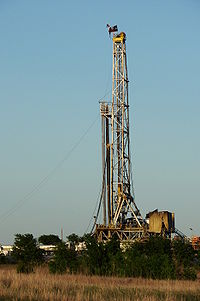
Photo from wikipedia
With the outbreak of the COVID-19 pandemic, many seismologists all over the world have noted a sharp (up to 30–50%) decrease in the daily background seismic noise during the period… Click to show full abstract
With the outbreak of the COVID-19 pandemic, many seismologists all over the world have noted a sharp (up to 30–50%) decrease in the daily background seismic noise during the period from March to May, 2020 (Lecocq et al., Science 369(6509):1338–1343, 2020). The authors studied the influence of the self-isolation regime introduced in the Russian Federation from March 30, 2020 and, as a consequence, the restriction of the work of public institutions and the mobility of the population, on the quality of seismological observations at seismic stations in large cities of the Russian Far East for the period from March 23, 2020 to April 12, 2020. The work analyses the records of seismic noise by the seismic stations of Khabarovsk and Vladivostok located in busy parts of the cities and, accordingly, strongly influenced by anthropogenic impact, as well as it analyses the records of the Yuzhno-Sakhalinsk seismic station located in the relatively «calm» part of the city. Power spectra and temporal variations of microseismic noise levels for the listed above seismic stations were constructed based on the data of broadband seismometers records in the range of 1–20 Hz. The analysis of noise level variations with the data on the population mobility was carried out on the basis of self-isolation index by Yandex, which shows the level of town activity over a selected period. The main sources of the increased microseismic noise at seismic stations were identified.
Journal Title: Pure and Applied Geophysics
Year Published: 2022
Link to full text (if available)
Share on Social Media: Sign Up to like & get
recommendations!